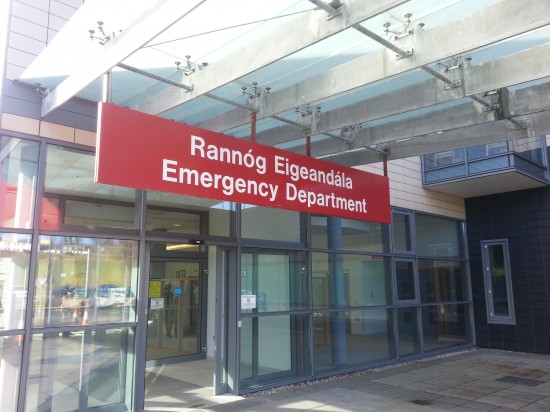by Louise Doyle
THERE will be “catastrophic outcomes” for patients if the State and HSE do not urgently intervene to address overcrowding and capacity issues, the Irish Nurses and Midwives Organisation (INMO) has warned.
The warning comes in the wake of stark data this week, revealing 108 people have died in Letterkenny University Hospital’s (LUH) Emergency Department (ED) in a five-year period between 2019 and 2023.
The figures were supplied to Irish Medical Times following a series of Freedom of Information requests including deaths which took place in EDs, as well as people who were pronounced dead on arrival.
A total of 5,428 people died in the country’s EDs in the past five years.
While 1,161 people died in Irish EDs last year, the figure is slightly down on the 1,210 deaths seen in 2022, according to the Irish Medical Times.
However, it is 182 more than the 979 who died in 2019.
Data from the country’s 26 EDs shows that Cork University Hospital saw the highest number of patients die in its emergency setting.
Last year 158 people were pronounced dead there, down from 183 the year before. In 2019, 109 people passed away there.
Compared to the pre-pandemic year, ED fatalities rose in 17 hospitals in 2023.
Three sites – Beaumont Hospital in Dublin, University Hospital Galway and Sligo University Hospital – saw more than twice as many deaths in its ED compared to 2019.
Speaking to the Donegal News, an INMO spokesperson said: “There is clear medical evidence on the relationship between overcrowding and long-term patient health outcomes. Increasing bed capacity and staffing levels must be a priority for the State. It is up to the government and the HSE to bring about these changes, or risk a collapse in the numbers of staff who are willing to work in Ireland, and catastrophic patient outcomes as a result.”
Asked to respond to the figures, a Saolta spokesperson told the Donegal News that many people who present to the emergency department do so “in their last minutes or hours of life”.
“The figures provided for the Saolta University Health Care hospitals refer to all deaths across all areas of the ED, the vast majority of which occurred in resuscitation or on presentation to the ED. Many people who present to the emergency department do so in their last minutes and hours of life. Unexpected deterioration in chronic conditions, major trauma and sudden catastrophic medical and surgical emergencies are the majority of reasons. It is the role of emergency departments to try to provide treatments for reversible conditions and to attempt to sustain life. Sadly some people have death confirmed on arrival or die after unsuccessful resuscitation attempts. The high level of data available on the number of deaths in EDs does not distinguish between those who were expected to die, those who suffered sudden catastrophic medical or surgical conditions, those who were victims of trauma or those who deteriorated unexpectedly in the ED.”
The spokesperson said that emergency department attendance rates in Ireland have “increased significantly in recent years”, driven by various factors including “demographic growth, population ageing and chronic disease”.










